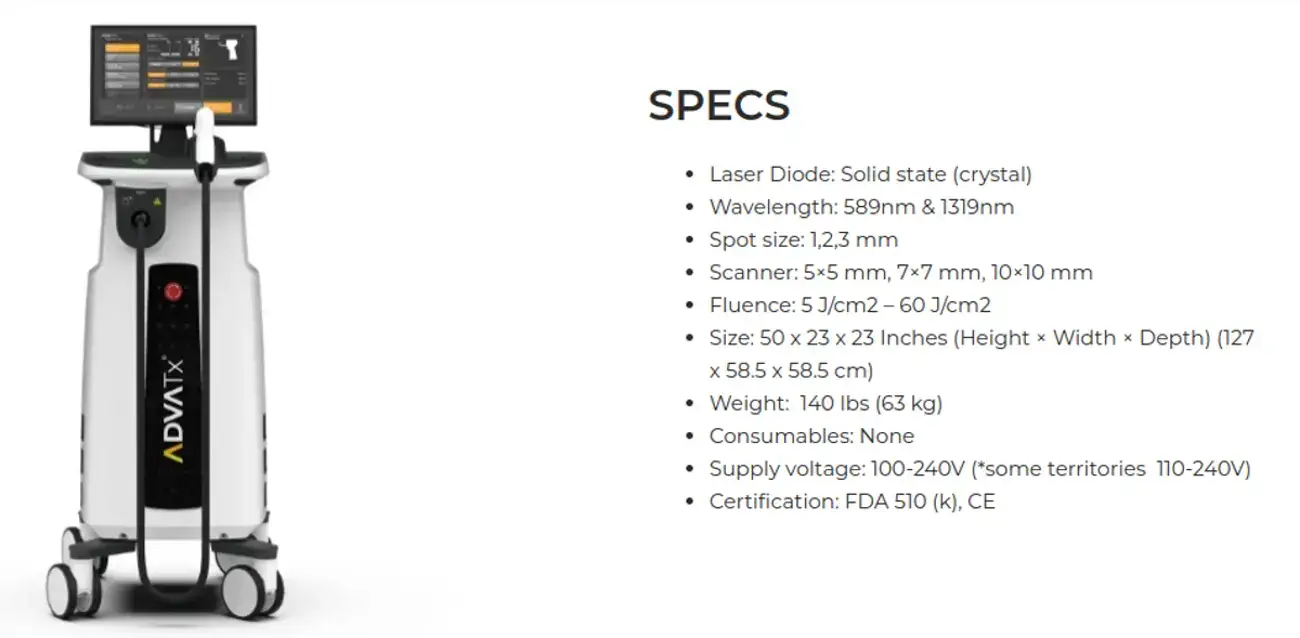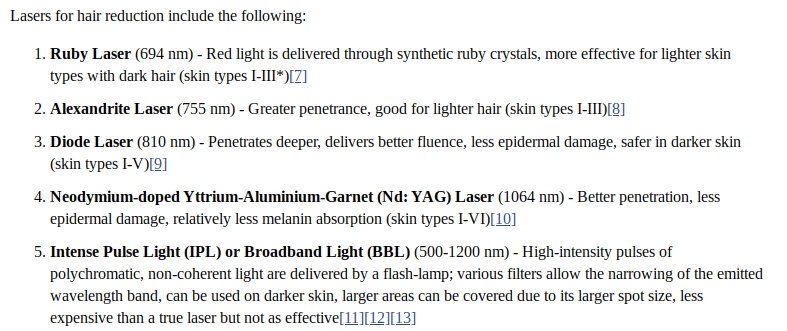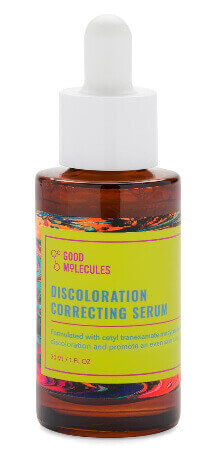In a recent article, well known dermatologist Dr. Suneel Chilukuri proclaimed that the ADVATx laser is the safest and most effective for dark skin tones. It is manufactured by Advalight of Denmark.
ADVATx Laser for Dark Skin Tones
The ADVATx laser is the world’s first and only solid-state laser that produces both of the following two wavelengths of light:
- 589 nanometers (yellow).
- 1319 nanometers (infrared).
For comparison, Nd:Yag lasers that are the most common for use in people with dark skin operate at a wavelength of 1064 nanometers.
Per Dr. Chilukuri:
The 1319 nm is completely color blind so you can treat all skin types.
On the company’s Instagram, you can see numerous before and after photos of satisfied patients.
Treatment of Multiple Skin Conditions
The combination of wavelengths allows the ADVATx laser to treat a wide variety of skin conditions. According to the manufacurer’s website, it has over 25 FDA/CE cleared indications:
FDA Cleared Indications (for 589 nm setting)
- Inflammatory Acne Vulgaris.
- Port wine stains.
- Telangectasia – face/legs.
- Rosacea.
- Hemangioma.
- Venous lake.
- Angiomas.
- Scars.
- Striae.
- Warts.
- Wrinkles – Periocular/Periorbital.
- Psoriasis.
FDA Cleared Indications (for 1319 nm setting)
- Fine Lines and Wrinkles.
- Atrophic Acne Scars.
- Mild/Moderate Inflammatory Acne.
CE Cleared Indications (for 589 nm setting)
- Telangiectasias.
- Spider veins, both facial and leg.
- Rosacea.
- Hemangiomas.
- Port wine stains.
- Venous lakes.
- Red or hypertrophic scars.
- Melasma.
- Hyperpigmentation.
- Skin rejuvenation.
CE Cleared Indications (for 1319 nm setting)
Skin rejuvenation
Reduction of acne scars
Reduction in the appearance of pores
Mild and moderate inflammatory acne vulgaris
The cutting-edge ADVATx laser is also unique in that it can be used to treat patients of all skin tones and types. It is also non-invasive and virtually painless, with little to no downtime.
How does the ADVATx Laser Work?
The ADVATx laser works by delivering pulses of laser energy to the skin. The 589 nanometer wavelength targets vascular lesions and acne bacteria, while the 1319 nanometer wavelength heats the dermis, stimulating collagen and elastin production. This results in improved skin tone, texture, and overall appearance.
The ADVATx laser is a versatile and effective treatment for a wide range of skin concerns. It is also safe and well-tolerated by most patients.
Here are some of the benefits of ADVATx laser treatments:
- Non-invasive and virtually painless.
- Little to no downtime.
- Can be used to treat patients of all skin tones and types.
- Effective for a wide range of skin conditions, including vascular lesions, acne, scars, warts, pigmentation, wrinkles, fine lines, enlarged pores, and crepey skin.
- Safe and well-tolerated by most patients.
- Please consult a qualified dermatologist or aesthetic physician if you want to learn more about ADVATx laser treatments.
ADVATx technology utilizes nano pulses to create energy. The resulting waves are of such a short frequency and time (duration), that this laser can effectively treat browns and reds without being absorbed by the skin. This makes it especially beneficial for those with melasma and hyperpigmentation. The 1319 nm wavelength is attracted to water instead of melanin in people with darker skin, thus preventing any burns of injuries.


